CREAMY LOBSTER BISQUE IS WAY EASIER THAN YOU THINK TO MAKE AT HOME WITH THIS FOOLPROOF RECIPE!
This Lobster Bisque recipe is lusciously rich and creamy loaded with buttery lobster in every aromatic bite. It’s always impressive and worthy of special occasions (Valentine’s Day!) or company AND is make ahead friendly using my par-boil lobster method. You can serve as a heavenly entrée or a show-stopping starter but it’s always SO worth the time to make. Homemade Lobster Bisque can be intimidating and expensive to make but I’ve streamlined the process and made it WAY less expensive by using lobster tails and walked you through with step by step photos, tips and tricks. The resulting Lobster Bisque recipe is velvety smooth, deeply rich, flavorful and oh so satisfying. If you’re not sure you are a Lobster Bisque fan, this recipe will convert you!

PIN THIS RECIPE TO SAVE FOR LATER
Lobster Bisque Recipe
Now that Game Season is over, it’s time to turn to the next big event – Valentine’s Day! Can you believe Valentines is already next week?! If you haven’t made a restaurant reservation by now, save the panic and indulge in this Lobster Bisque recipe instead – and you can make 99% of it ahead of time!
Classic lobster bisque recipes require at least two and a half hours to make, and can be overwhelming, complicated and expensive, but this Lobster Bisque recipe streamlines the process and utilizes smart shortcuts. This streamlined, less expensive version is everything you love about Lobster Bisque – the velvety smooth bisque, warm spiced broth, thick aromatic pureed vegetables with big chunks of lobster in every bite. It’s deeply rich, comforting, decadent, and indulgently delicious. Served it with a side of rustic bread and you’ll be wanting to curl up and eat nothing else all winter!
Before I bring you any recipe, I do a lot of research, experimenting and of course, taste testing 😉. This Lobster Bisque recipe smashes every box I was going for. Here’s why you’ll love it:
Flavorful! This Lobster Bisque recipe tastes super complex but is actually made with pantry friendly ingredients – minus the lobster tails. The key is building the flavors. It begins by sautéing the lobster shells, onions, carrots, celery and garlic in butter. Both chicken stock and clam juice are added to create deep, savory richness that can’t be beat. The stock is further seasoned with Worcestershire sauce, tomato paste and plenty of herbs to give it fragrant dimension. But the real kicker – the lobster meat gets sautéed in hot, foaming butter for just a minute before being dropped into the soup so it’s not just boiled lobster meat, but melt in your mouth buttery lobster meat.
Less expensive. Lobster Bisque is a velvety, decadent soup usually reserved for high end restaurants with a hefty price tag but this recipe brings you the creamy dreamy five-star dining experience right in your own home at the fraction of the cost. Not only do you not have to pay for the cost of dining out, but this recipe is less expensive to make than its peers because it utilizes lobster tails instead of beginning with whole live lobsters. And right now, the cold winter months is the very best time to buy lobster because the prices tend to be the lowest. My lobster tails were on sale for only 5.99 total!
Easy or at least easier. To that end, this Lobster Bisque recipe is much easier and less intimidating to make because all you do is boil lobster tails for a couple minutes to cook the meat – then just use kitchen shears to cut the shell open – no dropping live lobsters into hot boiling water. It also streamlines the entire process (more on that below) so it’s not overwhelmingly complicated.
Quicker. This Lobster Bisque recipe streamlines the process and shaves off about an hour from traditional methods. Still, Lobster Bisque as a whole requires longer to make than other soup recipes because we make homemade lobster stock from scratch which requires 25 minutes to simmer – but remember this his hands-off simmering time in which you can get other things done. As previously mentioned, this Lobster Bisque recipe is quicker because you don’t have to remove the meat from whole lobsters and it doesn’t require the extra step of simmering rice. The aromatic onions, celery, and carrots are also cooked directly with the lobster shells and not in two separate steps. So, even though Lobster Bisque still requires some time and effort, the results always warrant the effort. So put on a show, crank up the radio or turn on a podcast and prepare to wow yourself with this restaurant-quality Lobster Bisque recipe.
Creamy. This Lobster Bisque recipe is thickened by both the aromatic vegetables cooked directly in the lobster stock, cornstarch and heavy cream. By hitting the soup with three different thickeners, it emerges unabashedly, addictively creamy. This eliminates the need for the more classic addition of cooked rice which takes an extra 30 minutes to simmer – no thank you!
What is Lobster Bisque?
If you’ve never had Lobster Bisque before, prepare to fall in love! Lobster Bisque is a classic smooth and creamy French soup made from homemade lobster stock. Lobster shells are cooked with aromatics in broth to extract the flavor from the shells to create a deeply flavorful stock. The lobster stock is then strained and thickened with rice or heavy cream. Lobster meat is then added back into the soup. You can follow the same method using shrimp, crab, etc. to create other varieties of bisque.

WHAT MAKES A BISQUE DIFFERENT FROM A SOUP?
All soups made with lobster stock aren’t necessarily a bisque, so what else makes a soup a bisque? Bisques are always made of crustaceans such as lobster, crab, shrimp, and crayfish. The crustacean shells are simmered to make the soup stock and then the stock is pureed which makes it velvety smooth and creamy before adding the meat back to the soup. So, to refer to bisque as “seafood bisque” is redundant, but rather the bisque should be called by what crustaceans were used, such as “lobster bisque.”
Bisques also contain a high amount of cream, usually a higher ratio of cream to stock than cream soups, even chowder – yet another reason they are unapologetically scrumptious.
Lobster Bisque Ingredients
- Lobster: this Lobster Bisque recipe uses lobster tails which are arguably the most delicious part of the lobster, which is why so many restaurants serve just the tails. Using the delectable tails allows you to make Lobster Bisque at a faction of the cost as whole lobsters but with all the flavor. Look for fresh frozen lobster tails found at the seafood counter of your grocery store. You want to avoid thawed lobster tails and instead thaw them yourself then use them right away.
- Clam juice: clam juice and chicken broth are used as a base for our lobster stock as opposed to just water to create a deeply flavorful stock. Clam juice is the liquid collected from steamed clams. It is a common ingredient sold in bottles and should be easy to find next to the canned crab meat and tuna fish. This recipe calls for 2 ½ cups clam juice which is two 8 oz. bottles.
- Chicken Broth: take care your chicken broth is low sodium so we can control the salt.
- Half and half: is sold next to the heavy whipping cream and is equal parts milk and heavy cream. I often don’t keep half and half stocked but I do stock heavy cream so I’ll make my own half and half by using half milk and half cream.
- Mirepoix: is simply a fancy French term for the combination of diced carrots, onions and celery sautéed in butter/olive oil and in this case, lobster shells! Every chef will tell you that every great soup should begin with a mirepoix and I heartily agree. It adds richness and depth of flavor to the lobster stock that can’t be achieved any other way. The vegetables also add body and help thicken the soup once pureed.
- Tomato paste: adds a hint of tomato without overwhelming the soup. This Lobster Bisque recipe only calls for three tablespoons but you may use up to four if you wish.
- Butter: use unsalted butter so we can control the salt.
- Worcestershire sauce: adds a depth of complex savory, slightly tangy flavor.
- Seasonings: salt, pepper, dried parsley, dried tarragon, dried thyme, smoked paprika, cayenne pepper and bay leaves round out the flavor profile. Don’t skip the cayenne as it awakens the entire soup without making it spicy.
- Cornstarch: thickens the soup without having to cook rice or make a roux.
Do I have to use clam juice?
I highly recommend clam juice to really amp up the lobster flavor, but you could replace it with chicken broth. You can also use seafood or shrimp stock with delicious results. As always, make sure to use low sodium chicken broth and add salt to taste. My last choice would be vegetable broth as it isn’t as flavorful as the other options.
Can I use whole lobsters?
Absolutely! You can use two fresh live lobsters as opposed to lobster tails and steam them per instructions below:
How to Steam a Lobster
- Add 1 quart of water to a large (8-10 qt) stockpot and mix with 2 tablespoons salt. The water should be about 2 inches deep. Bring the water to a boil.
- Using metal tongs, gently add the lobsters, cover, and steam 9 minutes for the first pound, and add 4 minutes for each additional pound or until the shells are bright red and the antenna pulls out easily.
- Using a large pair of tongs, remove the lobsters to a large bowl or platter and let cool until they can be handled or place them in a bowl of cold water.
- After you remove the meat, roughly chop the shells and use all of the shells in the lobster stock.
What lobster is best?
If you have an option when selecting lobster tails, look for cold lobster tails as opposed to warm lobster tails. Cold lobsters generally come from Maine, Australia, New Zealand, and South Africa as opposed to warm lobster tails which generally come from Florida, the Caribbean, and Latin America.
Warm lobster tails are inconsistent and not as reliable as cold lobster when it comes to quality – you may end up with unappetizingly mushy meat. Cold lobster tails, on the other hand, boast meat that is tastier, firm yet tender with a “cleaner” taste. The cold-water lobster tails will probably be more expensive, but you don’t want to ruin your entire Lobster Bisque with squishy meat!
The easiest way to tell if the lobster tails are cold or warm water lobster is to ask! If the provider doesn’t know, then the are likely warm water lobster and you should keep looking.
The second way to tell if lobster tails are cold or warm water lobster is by inspecting the shells. Cold water shells are devoid of markings whereas warm water shells often have black spots on the shells and Caribbean tails have distinct yellow spots and a yellow band across the tail.
In addition to avoiding warm lobster tails, you will also want to steer clear if the lobster has any discoloration such as a grayish tail which means it was captured already dead or died shortly after or if you see any discoloration such as black spots on the lobster meat which means it was not handled properly.
Lastly, look for smaller lobster tails ranging from 4 oz to 12 oz. which is optimal for quality taste and texture.
How do I Thaw Frozen Lobster?
You will need to completely thaw the lobster tails first or they can become rubbery if cooked from frozen. The easiest way to thaw lobster tails is to transfer them to the refrigerator and let them thaw overnight. To quickly thaw frozen lobster tails, transfer them to a bowl of cold water and let sit for 30 minutes. If after 30 minutes the lobster isn’t thawed, drain water and repeat.

How to Make Lobster Bisque
This Lobster Bisque recipe requires some time, but is really quite simple to make. You will:
- Boil lobster tails and remove the meat
- Brown the shells in butter with onions, celery, carrots
- Add broth and seasonings and simmer
- Strain the stock and blend strained stock with half and half and cornstarch
- Simmer soup to thicken
- Sauté par-boiled lobster in butter and add to soup
- Serve!
Here are detailed step-by-step instructions:
- Par-Boil lobster tails. Fill a large stockpot or Dutch oven half way up with water. Bring to a boil then season with ½ tablespoon salt. Reduce heat slightly and keep water at a gentle boil. Carefully add lobster tails and boil just until tails turn red, about 2 minutes. We don’t want to cook the lobster meat all the way because we are going to sauté it in butter later to infuse it with flavor, not just boring, bland and boiled. Remove tails with tongs or a slotted spoon to a cutting board. Reserve 1 cup liquid and discard the rest.
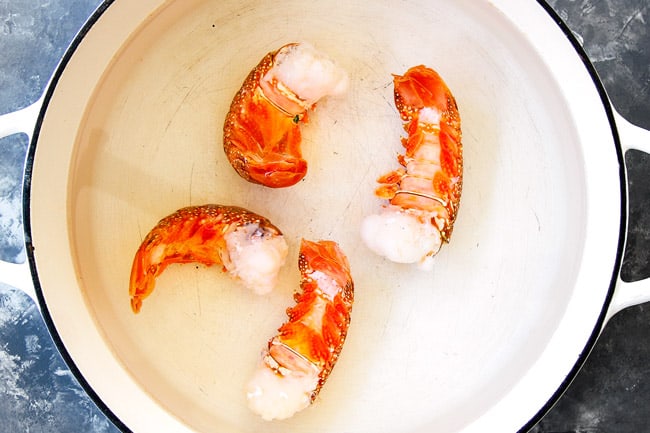
- Remove meat. Place the lobsters belly sided own on a cutting board. Use a sharp pair of kitchen shears to cut straight down the middle of the shell from the head to the fin. Pry the shells open with your fingers and remove the meat. Chop the meat into large bite-size pieces, cover and refrigerate. Cut the lobster shells with the kitchen shears into large pieces (about 3-inches).
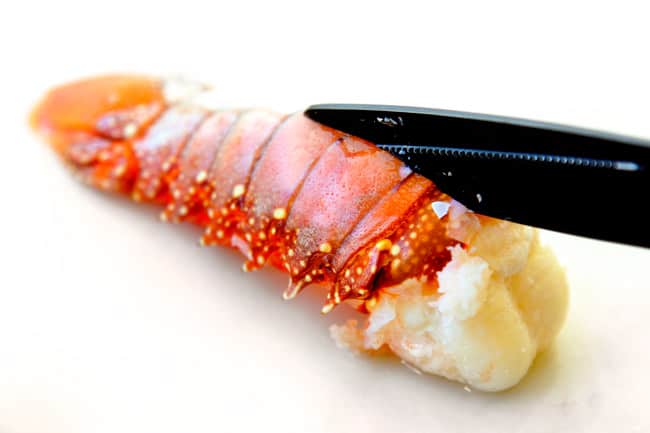


- Make lobster stock. Melt butter with olive oil over medium heat in the now empty pot. Add lobster shells and cook for 2 minutes to develop the flavor. Stir in onions, celery, carrots, salt and pepper and cook an additional 8 minutes, stirring occasionally. Stir in tomato paste, Worcestershire sauce, tarragon, parsley, thyme, and paprika and garlic; cook one minute. Add clam juice, chicken broth and bay leaves; cover and bring to a boil. Uncover and reduce to a simmer over medium-low for 25 minutes, stirring occasionally (it will be thick).

- Strain stock. Add soup contents to a colander (not a fine mesh sieve) over a large bowl. Pick out noticeable shells. Turn the colander slightly on its side so we can use the larger holes. Force all of the contents except the shells through the holes by pressing down with a spatula; discard lobster shells.
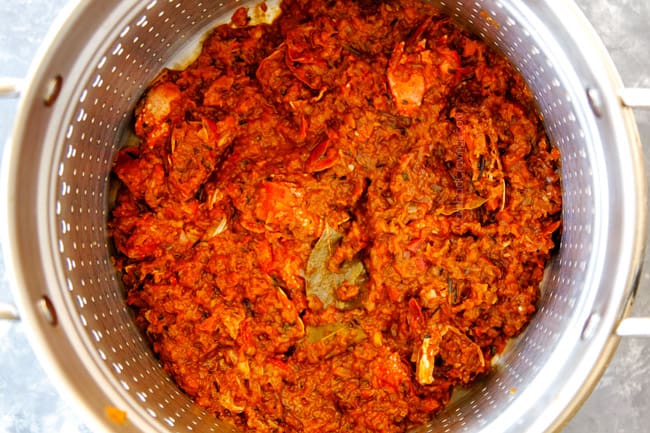
- Blend soup. Add strained contents to a high-powered blender along with half and half and cornstarch. Blend until smooth using the soup setting.
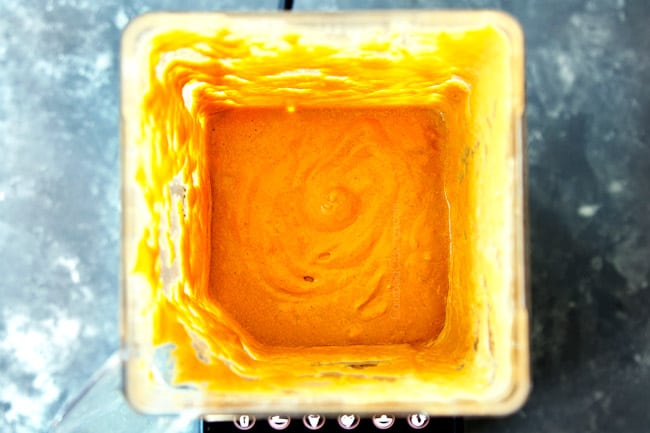
- Thicken soup. Add soup back to the stockpot. Stir in cayenne pepper. Bring to a simmer until it reaches desired consistency. For a thinner soup, stir in some reserved lobster stock. Taste and season with additional salt and pepper to taste (I like more pepper).

- Heat lobster in butter. When ready to serve, melt 1 tablespoon unsalted butter in a skillet over medium heat. Add lobster meat and season with freshly cracked salt and pepper. Cook while stirring, just until coated in butter and cooked through, 1 to 2 minutes.
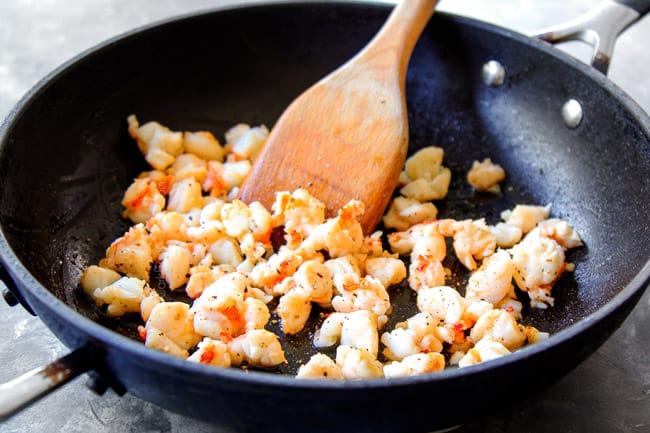
- Add lobster meat. Stir lobster meat into soup. Serve immediately.
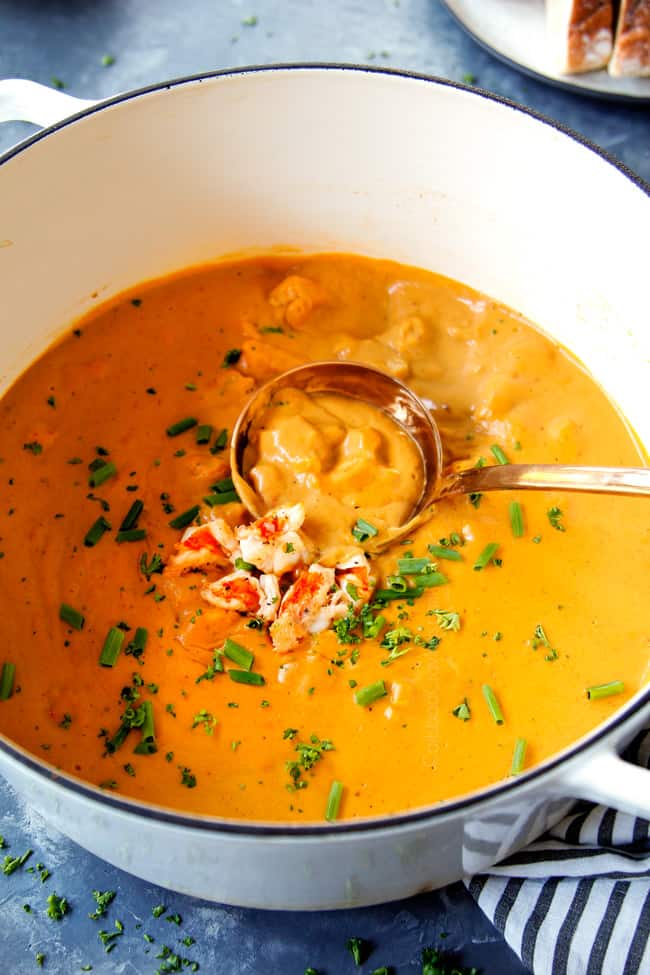
Tips and Tricks for Lobster Bisque
- Use cold water lobster tails. As previously discussed in detail, use cold water lobster tails as opposed to warm lobster tails for reliable quality meat.
- Shortcut ALERT!: Chopping the celery, onions and carrots is the most time consuming prep for this Lobster Bisque recipe, but the mirepoix is so worth it. To save time you can chop all your veggies in advance or you can purchase mirepoix by the jar and keep it in your refrigerator OR use our food processor! I LOVE using my food processor this recipe because all of the veggies are going to be pureed anyway.

- Tomato Paste: This Lobster Bisque recipe only uses three tablespoons tomato paste. I often don’t use a whole can of tomato paste in a week, so I always freeze it by the tablespoon. To do this, place parchment paper on a small baking sheet or plate – something that can easily fit in your freezer. Drop tomato paste by the tablespoon on parchment paper a few inches apart in rows then freeze until solid, about 1 hour. Cut a grid around the tomato paste so each tablespoon has its own parchment square. Wrap up the parchment paper around the tomato paste and place in a plastic bag. Freeze for up to 6 months, taking out one tablespoon of tomato paste as needed.
- Don’t overcook lobster. When par-boiling the lobster, our aim is to cook the lobster just enough so it easily pries away from the shell – we are not trying to cook the lobster all the way through. It is better for the lobster to be undercooked at this point because we are going to sauté the lobster in butter later.
- Sauté in butter just until opaque. The goal of sautéing the lobster in butter is to infuse it with flavor. If your lobster is already cooked from boiling, then just toss it in the butter and gently warm but don’t continue to cook or it will become rubbery. If your lobster is par-cooked, then cook in butter just until cooked through.
- Don’t cut shell pieces too small. We are going to pick out the shells (with the help of a colander later), so don’t cut them too small so they will be easier to remove.
- Don’t chop lobster meat too small. Chop the meat into about 1-inch pieces so it creates hearty, melt in your mouth pieces in every bite. Larger pieces will also be harder to overcook in the butter.
- Use a colander not a fine mesh sieve. Our goal of straining the lobster stock is to remove the lobster shells from the stock (which will basically reduce down to softened, uber flavor infused vegetables). The stock will be quite thick so if you try and force the stock through the holes of a fine mesh sieve and even the small bottom holes of a colander, it will take you 10X longer. So, make sure to tilt your colander and press the stock through the large side holes.
- Strain again. I skip this step but if you’re worried you’ve gotten some bits of shell into your stock, then you can strain the blended stock through a fine mesh sieve when returning to your stockpot.
- Use a high-powered blender. I highly recommend a high-powered blender verses an immersion blender to puree the Lobster Bisque. The immersion blender simply doesn’t create as gorgeously silky-smooth soup.
- Add lobster at last minute. Wait to sauté the lobster in butter just when you’re ready to serve so it doesn’t continue to cook any longer than necessary in the hot bisque.
- Keep lobster separate if making ahead. Store the lobster and the bisque separate airtight containers in the refrigerator if making ahead.
- Thicken to desired consistency. There is some wiggle room with the consistency because not all soups will reduce the same – some will have more liquid remaining, some will be super thick. Luckily, we can counteract this unknown by gently simmering the soup to desired consistency. Simply simmer longer if you would like a thicker soup and stop simmering as soon as it reaches desired consistency. If it becomes too thick, stir in some of the reserved lobster stock.
- Don’t boil. Gently simmer and don’t boil the pureed soup to prevent the dairy from separating or curdling.
- Season! If the Lobster Bisque tastes like its missing something after you add the lobster back in, it is probably additional salt and pepper. I add both! Season a little at a time until it tastes just right. If you like more of a kick, season with additional cayenne pepper.
HOW DO YOU PREVENT LOBSTER FROM BECOMING RUBBERY?
They key to preventing rubbery lobster is to not overcook it. Aim to par-boil the lobster initially and not cook it all the way through. The outside will look cooked but as you chop it up, you will see that the inside isn’t cooked through yet. When you sauté it in butter, stop as soon as soon as it is cooked through. If your lobster is already cooked from boiling, then just toss it in the butter and gently warm but don’t continue to cook or it will become rubbery.
Finally, we don’t want the lobster to continue to cook in the soup, so add it to the bisque just when you’re ready to serve. This means you’ll have to sauté it in butter just before serving so it is warm going into the soup.
HOW DO YOU THICKEN LOBSTER BISQUE?
Everyone has their own opinion as to how thick a bisque should be. For this Lobster Bisque recipe, cornstarch is blended with half and half then added to the bisque at the end of cooking. You should be easily able to thicken the soup simply by simmering with the cornstarch. If you still would like a thicker bisque, you can thicken the soup by:
- Cornstarch: Whisk ½ tablespoon cornstarch with ¼ cup half and half with a fork until smooth then whisk it back into the chowder. Simmer until thickened to desired consistency. Repeat if necessary.
- Rice: Cook ½ cup white rice separately from the soup. Add some of the rice to a blender along with some soup and puree until smooth, then stir back into the bisque.
- Mash potatoes: Potatoes are a natural thickener. Microwave a few potatoes, peel them and add them to a blender along with some of the bisque. Puree until smooth then stir them back into the soup.
IS LOBSTER BISQUE SERVED HOT OR COLD?
Lobster Bisque should be served hot, as soon as you add the lobster so you can truly taste the depth of flavor. You may serve it cold, for leftovers for example, but I don’t find cold bisque appetizing.
How Long Does Lobster Bisque Last in the Fridge?
Lobster Bisque should be stored in an airtight container in the refrigerator. As with most seafood, it should not be stored longer than 2-3 days.
Can I Freeze Lobster Bisque?
I do not recommend freezing Lobster Bisque. As with most soups with added cream, it can separate and become a funny texter when frozen.

Can I make Lobster Bisque Ahead of time?
Yes! The soup base and par-cooked lobster meat can be refrigerated separately, up to 2 days. When ready to make, gently reheat the soup on the stove and finish cooking the lobster in butter per recipe directions.
WHAT TO SERVE WITH LOBSTER BISQUE?
Lobster Bisque can be served as a decadent starter or delectable entrée. It is perfect of holidays such as Valentine’s Day and Christmas.
FAVORITE SPECIAL MAIN DISHES
Lobster Bisque is traditionally reserved for special occasions so if serving as a starter, it warrants special occasion entrees such as:
Protein:
- Best Baked Pork Tenderloin with Garlic Herb Butter
- Brown Sugar Ham or Honey Baked Ham
- Baked Salmon in Lemon Garlic Sauce
- Spice Rubbed Steaks with Herb Butter
- Pan Seared Steak with Balsamic Herb Cream sauce
- Slow Cooker Beef Tips and Gravy
- Slow Cooker Honey Balsamic Beef
- Pot Roast with Potatoes, Carrots and Gravy (or crockpot version)
- Asian BBQ Salmon
- Blackberry Hoisin Pork Tenderloin
- Pork Tenderloin with Chimichurri
- Cajun Pork with Tangy Pineapple Glaze
- Sheet Pan Chili Dijon Pork Tenderloin with Green Beans and Potatoes
- Slow Cooker Beef Stroganoff
- Pistachio Gruyere chicken Cordon Bleu
Pasta:
- World’s Best Lasagna or White Chicken Lasagna
- Italian Sausage Manicotti
- Bolognese
- Cacio e Pepe
- Rigatoni in Tomato Cream Sauce
- Million Dollar Baked Penne
- Million Dollar Chicken Alfredo Bake
- Sun Dried Tomato Basil Shrimp Pasta
- Skillet Italian Meatballs (and Spaghetti)
- Lemon Shrimp Fettuccine
- Chicken Parmesan with 5 Minute Marinara
FAVORITE SPECIAL OCCASION APPETIZERS
Pair Lobster Bisque with equally impressive appetizers such as:
- Crab Cakes with Creamy Tomatillo Jalapeno Dip
- Strawberry Pear Gorgonzola Flatbread
- Strawberry Bruschetta with Balsamic Glaze
- Brie Spinach Dip
- Bacon Wrapped Shrimp
- Artichoke Dip Bites
- Garlic Herb Goat Cheese Log
- French Onion Cheese Fondue
- Hot Crab Dip
FAVORITE SPECIAL OCCASION SIDES
When serving Lobster Bisque as a main dish, it pairs fantastically with crusty bread to mop of the sauce. Here are some additional company worthy side dish ideas to serve with bisque:
- Bread: Garlic Bread, Dinner Rolls, Garlic Parmesan Butter Breadsticks or Pesto Pull Apart Bread.
- Salad: Wedge Salad with Blue Cheese Ranch, Cucumber Tomato Salad, Strawberry Salad with Balsamic Vinaigrette, Apple Salad, Pear Salad, Roasted Butternut Squash Salad, Cranberry Apple Shaved Brussels Sprouts Salad, or Green Bean Salad.
- Vegetables: Roasted Parmesan Broccoli, Roasted Parmesan Asparagus, Roasted Butternut Squash, Roasted Carrots or Glazed Carrots, Roasted Cauliflower, Roasted Brussels Sprouts or Sautéed Brussels Sprouts, Roasted Root Vegetables, or Roasted Potatoes.
- Fruit: Fruit Salad with Honey Lime Vinaigrette, Winter Fruit Salad with Honey Lime Poppy Seed Vinaigrette and Berry Salad in Honey Mascarpone, Tropical Fruit Salad, or Pina Colada Fruit Salad.

Want to try this Lobster Bisque RECIPE?
Pin it to your Soup, Seafood or Holiday Board to SAVE for later!
Find me on Pinterest for more great recipes! I am always pinning :)!
©Carlsbad Cravings by CarlsbadCravings.com

Lobster Bisque
Save This Recipe To Your Recipe Box
You can now create an account on our site and save your favorite recipes all in one place!
Ingredients
- 1 pound cold water lobster tails freshly thawed
- 4 tablespoons butter
- 1 tablespoon olive oil
- 1 onion diced (I use my food processor)
- 2 carrot diced (I use my food processor)
- 3 celery stalks diced (I use my food processor)
- 3/4 teaspoon salt
- 1/4 teaspoon pepper
- 3 tablespoons tomato paste
- 2 teaspoons Worcestershire sauce
- 3-4 garlic cloves minced
- 1 tsp EACH dried parsley, dried tarragon
- 1/2 tsp tsp EACH dried thyme, paprika
- 2 1/2 cups clam juice (2 8 oz. bottles)
- 1 1/2 cups low sodium chicken broth
- 2 bay leaves
- 1 tablespoon cornstarch
- 3 cups half and half
- 1/8 teaspoon cayenne pepper
Instructions
Par-Boil lobster tails
- Fill a large stockpot or Dutch oven half way up with water. Bring to a boil then season with ½ tablespoon salt. (While I’m waiting for the water to boil, I chop my veggies in the food processor). Reduce heat slightly and keep water at a gentle boil. Carefully add lobster tails and boil just until tails turn red, about 2-4 minutes depending on size. We don’t want to cook the lobster meat all the way because we are going to sauté it in butter later. Remove tails with tongs or a slotted spoon to a cutting board. Reserve 1 cup liquid and discard the rest.
Remove meat
- Place the lobsters belly sided own on a cutting board. Use a sharp pair of kitchen shears to cut straight down the middle of the shell from the head to the fin. Pry the shells open with your fingers and remove the meat. Chop the meat into large bite-size pieces, cover and refrigerate. Cut the lobster shells with the kitchen shears into large pieces (about 3-inches).
Make lobster stock
- Melt butter with olive oil over medium heat in the now empty pot. Add lobster shells and cook for 2 minutes to develop the flavor. Stir in onions, celery, carrots, salt and pepper and cook an additional 8 minutes, stirring occasionally. Stir in tomato paste, Worcestershire sauce, tarragon, parsley, thyme, paprika and garlic; cook one minute. Add clam juice, chicken broth and bay leaves; cover and bring to a boil. Uncover and reduce to a simmer over medium-low for 25 minutes, stirring occasionally (it will be thick).
Strain stock
- Add soup contents to a colander (not a fine mesh sieve) over a large bowl. Pick out noticeable shells. Turn the colander slightly on its side so we can use the larger side holes. Force all of the contents except the shells through the holes by pressing down with a spatula; discard lobster shells.
Blend soup
- Add strained contents to a high-powered blender along with half and half and cornstarch. Blend until smooth using the soup setting.
Thicken soup
- Add soup back to the stockpot. Stir in cayenne pepper. Bring to a simmer until it reaches desired consistency. For a thinner soup, stir in some reserved lobster stock. Taste and season with additional salt and pepper to taste (I like more pepper). At this point you can refrigerate or continue if ready to serve.
Heat lobster in butter
- When ready to serve, melt 1 tablespoon unsalted butter in a skillet over medium heat. Add lobster meat and season with freshly cracked salt and pepper. Cook while stirring, just until coated in butter and cooked through, 1 to 2 minutes.
Add lobster meat.
- Stir lobster meat into soup. Serve immediately.
Notes
Tips and Tricks
- Use cold lobster tails. As previously discussed in detail, use cold water lobster tails as opposed to warm lobster tails for reliable quality meat.
- Shortcut ALERT!: Chopping the celery, onions and carrots is the most time consuming prep for this Lobster Bisque recipe, but the mirepoix is so worth it. To save time you can chop all your veggies in advance or you can purchase mirepoix by the jar and keep it in your refrigerator OR use our food processor! I LOVE using my food processor this recipe because all of the veggies are going to be pureed anyway.
- Tomato Paste: This Lobster Bisque recipe only uses three tablespoons tomato paste. I often don’t use a whole can of tomato paste in a week, so I always freeze it by the tablespoon. To do this, place parchment paper on a small baking sheet or plate – something that can easily fit in your freezer. Drop tomato paste by the tablespoon on parchment paper a few inches apart in rows then freeze until solid, about 1 hour. Cut a grid around the tomato paste so each tablespoon has its own parchment square. Wrap up the parchment paper around the tomato paste and place in a plastic bag. Freeze for up to 6 months, taking out one tablespoon of tomato paste as needed.
- Don’t overcook lobster. When par-boiling the lobster, our aim is to cook the lobster just enough so it easily pries away from the shell – we are not trying to cook the lobster all the way through. It is better for the lobster to be undercooked at this point because we are going to sauté the lobster in butter later.
- Sauté in butter just until opaque. The goal of sautéing the lobster in butter is to infuse it with flavor. If your lobster is already cooked from boiling, then just toss it in the butter and gently warm but don’t continue to cook or it will become rubbery. If your lobster is par-cooked, then cook in butter just until cooked through.
- Don’t cut shell pieces too small. We are going to pick out the shells (with the help of a colander later), so don’t cut them too small so they will be easier to remove.
- Don’t chop lobster meat too small. Chop the meat into about 1-inch pieces so it creates hearty, melt in your mouth pieces in every bite. Larger pieces will also be harder to overcook in the butter.
- Use a colander not a fine mesh sieve. Our goal of straining the lobster stock is to remove the lobster shells from the stock (which will basically reduce down to softened, uber flavor infused vegetables). The stock will be quite thick so if you try and force the stock through the holes of a fine mesh sieve and even the small bottom holes of a colander, it will take you 10X longer. So, make sure to tilt your colander and press the stock through the large side holes.
- Strain again. I skip this step but if you’re worried you’ve gotten some bits of shell into your stock, then you can strain the blended stock through a fine mesh sieve when returning to your stockpot.
- Use a high-powered blender. I highly recommend a high-powered blender verses an immersion blender to puree the Lobster Bisque. The immersion blender simply doesn’t create as gorgeously silky-smooth soup.
- Add lobster at last minute. Wait to sauté the lobster in butter just when you’re ready to serve so it doesn’t continue to cook any longer than necessary in the hot bisque.
- Keep lobster separate if making ahead. Store the lobster and the bisque separate airtight containers in the refrigerator if making ahead.
- Thicken to desired consistency. There is some wiggle room with the consistency because not all soups will reduce the same – some will have more liquid remaining, some will be super thick. Luckily, we can counteract this unknown by gently simmering the soup to desired consistency. Simply simmer longer if you would like a thicker soup and stop simmering as soon as it reaches desired consistency. If it becomes too thick, stir in some of the reserved lobster stock.
- Don’t boil. Gently simmer and don’t boil the pureed soup to prevent the dairy from separating or curdling.
- Season! If the Lobster Bisque tastes like its missing something after you add the lobster back in, it is probably additional salt and pepper. I add both! Season a little at a time until it tastes just right. If you like more of a kick, season with additional cayenne pepper.
Make Ahead
Follow the recipe all the way up through thickening the soup. Store the soup base and par-cooked lobster meat separately in the refrigerator for up to 2 days. When ready to make, gently reheat the soup on the stove and finish cooking the lobster in butter per recipe directions, then combine.

Did You Make This Recipe?
Tag @CarlsbadCravings and Use #CarlsbadCravngs
Leave a Review, I Always Love Hearing From You!
Carlsbad Cravings© Original
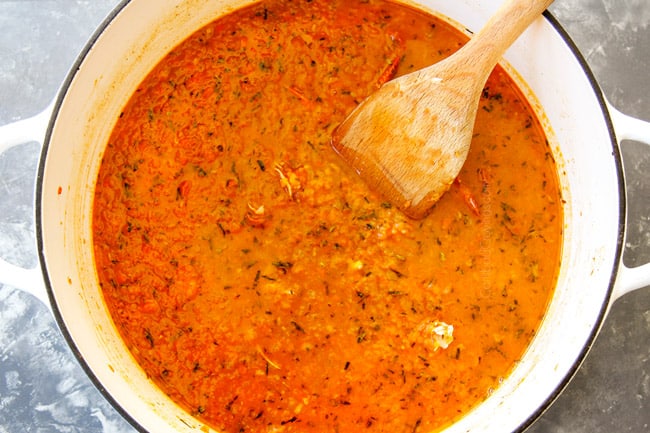
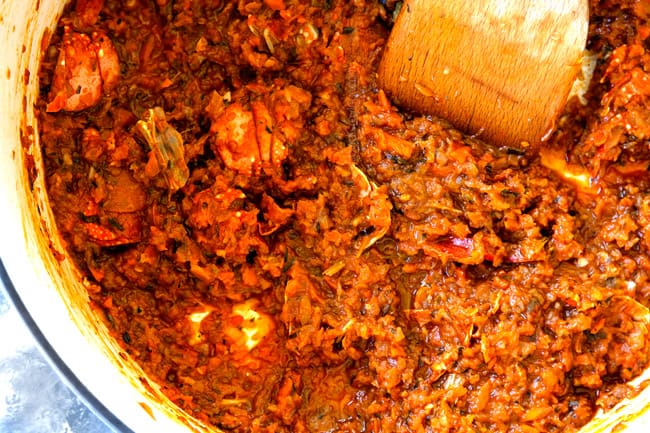
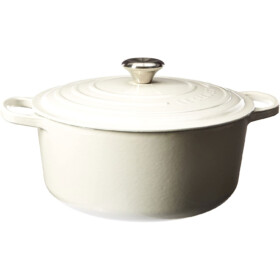
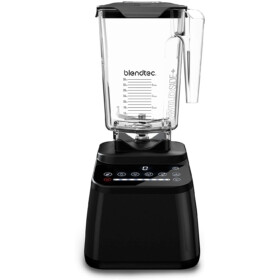

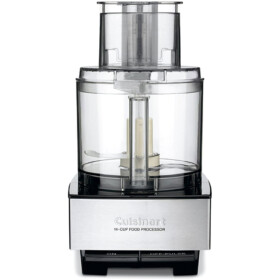
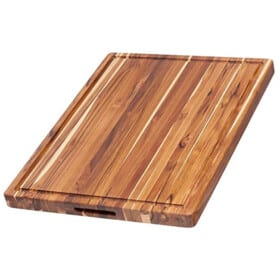
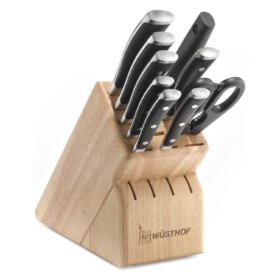
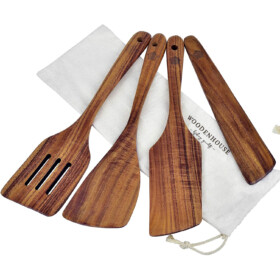





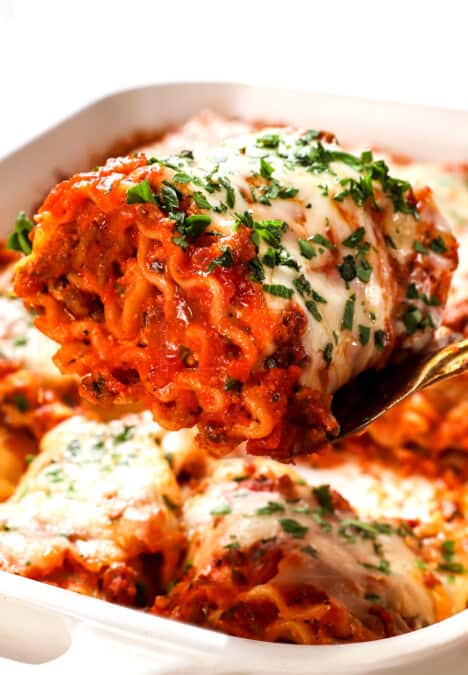























sarah says
How gorgeous! I love lobster bisque and I get so excited when I see it on a restaurant menu. I hadn’t ever even thought of making it at home. Thanks for the recipe!
Jen says
You’re so welcome! I’m excited for you to make your own – you will love this recipe!
Sue says
I love lobster bisque and your recipe sounds doable and delicious. I would like to serve it as a sauce on top of some form of pasta. Do you think this would work. Of course I will treat my husband and myself to lobster bisque soup.
Jen says
I think that’s a great idea Sue, it will be delicious!
Dawn Snyder says
when do you add 1/2 and 1/2?
Jen says
Blend soup
Add strained contents to a high-powered blender along with half and half and cornstarch. Blend until smooth using the soup setting.
Marilynne says
Can the stock be made without including shells? I have a Costco package of lobster pieces in my freezer that I need to use up….
Jen says
Yes! It might not be quite as flavorful, but still tasty.
Daisy says
There was a lobster food truck in our neighborhood. Of course we couldn’t pass up the opportunity to have lobster bisque….it was only “okay”. But then I had a powerful craving for some “really good” lobster bisque. Found this recipe, one quick trip to the grocery store and VOILA! delicious lobster bisque made at home! I had never made it at home because I’m too much of a weenie to cook live lobsters. This recipe was easy to follow and now we have lobster bisque whenever we want!
Jen says
Yay! I am so glad this recipe was a success and that you’ll never be deprived of lobster bisque! 🙂 Thank you so much, Daisy!
Denise Freshour says
I’ve made this and it is delicious! Curious about the Nutrition Information. Thank you
Jen says
Thank you! I’m so glad you enjoyed it. I don’t have nutritional info, sorry for the inconvenience!